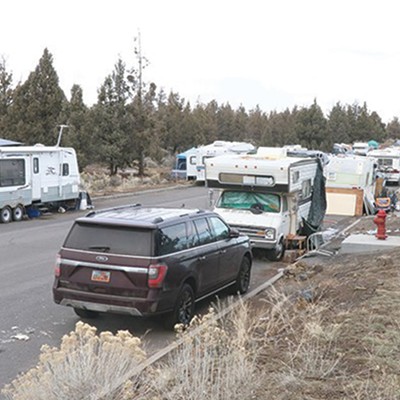If it's not abundantly clear to anyone out there by now, know this: Central Oregonians love their beer. We love drinking it, talking about it...and yes, even making it ourselves.
One such home brewer in our midst is the Source Weekly's Brian Jennings, who has these tips to share about the fermentation and home brewing process.
Sterilize
The most important safeguard in brewing is to make sure your equipment—all of it—is thoroughly sterilized. Bacteria are the worst enemy of a brewer. A spoiled batch of ale or lager is not only disappointing, but costly. Many home brewers sterilize their equipment before and after they brew which helps prevent bacteria growth between sessions. Sterilize everything, including boil kettles, measuring equipment, fermentation carboys, fermentation locks, siphon tubes, etc.
Boiling Kettles
A large boiling kettle that will contain the volume of the wort (beer mixture), including hops, helps avoid boil over. If you are boiling your brew on a kitchen burner you will appreciate not having to clean the burner afterward. Better yet, purchase a burner to boil your brew in the garage or backyard. Be sure to crack a garage door for ventilation.
Chilling the Wort
About 45 to 50 minutes into a robust boil, it's a good idea to add a bit of Irish moss into the mixture. This helps in the ultimate clarification of the brew. After boiling your mixture for approximately an hour it's very important to chill it to the proper temperature before adding the yeast. Adding yeast to a mixture that's too warm will kill yeast cells, so a chilling mechanism is important. Many home brewers place the boil kettle in a utility sink and surround it with cold water and ice. You may have to keep adding ice until the temperature of the wort inside the kettle drops to below 72 degrees Fahrenheit. An even better temperature is 68 degrees.
Carboy Fermentation
Glass carboys are generally the most preferred method of fermenting a home brew. After the mixture reaches the proper yeast temperature, transfer the wort from kettle to carboy. If you are making a 5-gallon batch, a 6-gallon carboy works well and provides enough room for an active fermentation. Once the transfer of the wort is completed, add the yeast and give it a thorough swirl-shake to distribute the yeast. This also helps provide some oxygen which helps in the activation of the fermentation process.
Make sure the fermentation air lock is firmly inserted into the carboy to keep out unwanted air and bacteria. Fermentation should begin within hours. Within 24 hours, fermentation should be robust and you should be able to smell beer in the making. Keep it out of direct sunlight. Many brewers will cover carboys with a blanket or old shirt.
After about a week to 10 days of fermentation, bubbling will slow to a near stop and the beer should be ready to transfer to another carboy for secondary fermentation and clarification. A week-long secondary fermentation process allows more sediment to settle, plus the beer ages.
Many home brewers prefer to keg their beer to avoid the hassle of bottling. If you want to take a bottle or growler of beer to a party or share with a friend, it's easy to draw it from the keg. Don't rush the aging process before tapping. A good rule of thumb from boiling to tapping for ale is about a month. Lagers take longer.
Write It Down
Keep an accurate log of what you create. Nothing is worse than producing a great brew and not having a log of the exact ingredients or process. Cheers!
Learn the Craft from Others
The Brew Shop on Third Street in Bend offers equipment and expertise for the beginning or advanced home brewer. The Central Oregon Home Brewer's Organization meets once a month to discuss techniques, recipes, and to exchange tips among brewers. COHO meets every third Wednesday.

























